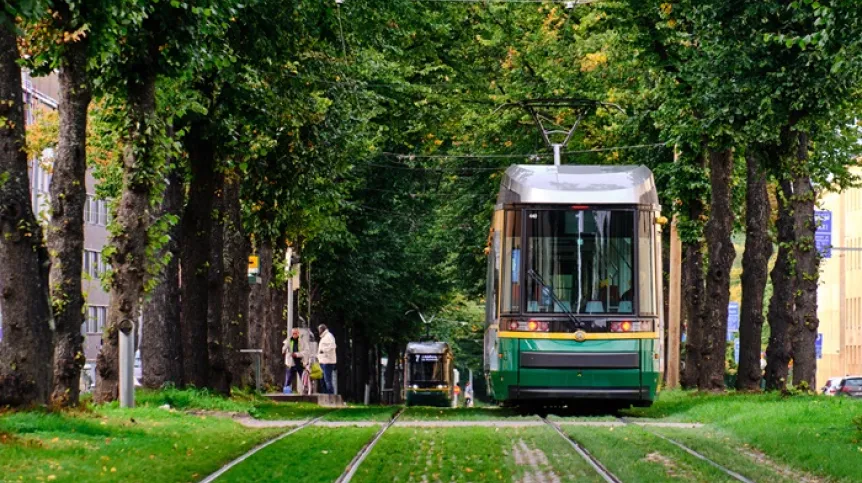
International research involving scientists from Poland, Germany and Brazil has been exploring why trams have an impact on biodiversity in urban areas.
The results have just been published in Scientific Reports.
The analysis of available global data has shown that trams and their infrastructure can have a significant impact on local ecosystems, which is often overlooked in debates about public transport. 'We were surprised to find that only a few studies had been conducted on the interaction between trams and wildlife, which is a significant contrast to other transport methods', says Professor Piotr Tryjanowski from the Poznań University of Life Sciences, one of the originators and main authors of the study. 'This shows how important it is to carry out more detailed work in this area'.
'Our research suggests that trams can be an example of a landscape sharing policy within green urban planning, which improves biodiversity and the mental health of residents. An example of such activities is the management of tram stations and tracks by planting low vegetation, which can have both ecological and aesthetic benefits, especially in the urban landscape significantly transformed by humans', says the first author of the publication, Professor Dawid Moroń from the Institute of Systematics and Evolution of Animals of the Polish Academy of Sciences in Kraków.
'The potential environmental benefits of green practices for commercially available trams should be rigorously tested and applied, especially in the context of the growing popularity of tram systems around the world', adds Professor Tryjanowski. The study also highlights the need to implement economic methods to evaluate the non-market benefits of greening tramways, which is crucial for sustainable decision-making in urban areas.
The authors emphasise that the presented results are a significant contribution to the debate on the importance and possibilities of public transport in a changing world. They offer new perspectives related to combining urban management with nature conservation.
Scientists point out that tramway technology is constantly developing, but the accompanying public, political and scientific debates often ignore its environmental aspects. 'One of the interesting directions of development are trams running without external traction networks, which is aimed at protecting historic areas and natural landscape values. For example, the solution being considered in Munich is the use of trams equipped with batteries, which could travel several kilometres long sections without using the traction network. The goal is to enable the construction of the northern tram ring of Englischer Garten - one of the most famous city parks - without significant interference in the landscape and environment', says Dr. Michał Beim from the Poznań University of Life Sciences, one of the co-authors of the publication.
Battery-powered or hydrogen fuel cell trams are still under research, as shown by the H2-Tram project in Germany. Such innovations can reduce the ecological footprint of trams, but they also require integrated management strategies that take into account both social and environmental needs.
The published study indicates that research on tram engineering is growing, as is public interest in trams as transport networks. The scientists also point out the need for further analyses of the impact of tram infrastructure on at least several aspects: creating new habitats for biodiversity; maintaining ecological processes such as migration and primary production; increasing the economic valuation of ecosystem services such as combating global warming, plant pollination, water retention and aesthetic values, assessing and preventing collisions with animals through engineering solutions; including trams in the urban development strategy, taking into account sharing and saving land.
A great challenge the scientists add, remains the integration of trams into urban strategies that harmoniously combine transport needs with the protection of nature and biodiversity. 'If properly managed, trams can become a key element of sustainable urban development', they say.
PAP - Science in Poland
zan/ kap/
tr. RL













